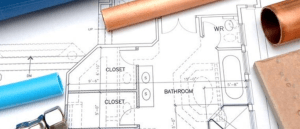 Live in your own home longer in your later years by adapting it for your own safety and navigation.
Live in your own home longer in your later years by adapting it for your own safety and navigation.
Adapting your home to age in place
The Bottom Line
- Many older adults are eligible for various tax incentives, programs and services to support aging in place.
- Home modifications make it possible to stay at home for as long as possible, in a secure and autonomous way.
- Home modification interventions appear most effective when coupled with other interventions, such as a comprehensive risk assessment of the home environment to reduce the potential for injuries, as well as education offered to older adults and caregivers.
Most older adults want to stay at home for as long as possible, but most homes have not been designed to accommodate their needs as they age.(1)
Several governments have introduced tax incentives, programs and services to support aging in place. These can support home renovations, and can improve access to various assistive technologies to ensure a safer home environment, such as a panic button, an adapted bathtub, grab bars, or a chair on a rail to go up and down stairs.(2)
Older adults who have cognitive and functional limitations and whose homes are not adapted to their needs sometimes consider moving to an assisted-living facility or nursing home. This can add to the financial burden for older adults, their families and the healthcare and social-care systems (not to mention the social and emotional impacts of such a change). However, home modifications may be a promising strategy to help older adults stay in the comfort of their homes, while improving their ability to carry out their daily activities and ensuring their safety and well-being. But what do we know about the effectiveness of such home modifications?
What the research tells us
A systematic review of 36 studies was conducted to examine the effectiveness of home modifications to support home care and community involvement of older adults.(2) The results indicate that home modifications can be beneficial in several ways.
Improving cognitive and functional capacities of older adults
Older adults whose homes have been adapted and who have also received services from professionals (such as occupational therapists, physiotherapists, or nurses) have seen an improvement in their cognitive and functional capacities. For example, frail older adults who had home modifications had less difficulty performing their daily activities, were less afraid of falling, were more independent, and lived in a home generally perceived as safer. These home modifications were done in addition to other interventions designed to provide them with education, and with training offered by occupational therapists and physiotherapists to improve their strength and balance.
Supporting caregivers
The positive effects of home modification interventions on caregivers of older adults with dementia have also been demonstrated. Being able to rely on effective assistive technologies in the home can facilitate care routines. By creating a safer home environment, these interventions also help caregivers feel less stressed and more competent, and they can better manage the difficult behaviours and memory loss of older adults with dementia.
Reducing the risk of falls
Home modifications are often coupled with at least one other fall-prevention intervention, such as those conducted by occupational and physical therapists (for example, conducting a residential risk assessment and developing a plan to eliminate identified risk). Such comprehensive interventions have been shown to reduce the risk of falls.
Of note is that none of the studies identified by this systematic review examined the effect of home modifications on community participation by older adults,
The findings from this systematic review can be used as a guide to which home modifications can improve the functional capacities of older adults, reduce the risk of falls, and help caregivers delivering care to older adults who wish to age in place. Home modifications coupled with other interventions have been shown to be more effective. It is likely that the rigorous assessment of risk factors in the home environment, the implementation of a plan to remedy the situation, and the education of caregivers and older adults in the safe use of assistive technologies, will allow older adults to age in their homes for as long as possible, safely and with dignity.
Occupational therapists, whose role is to plan and supervise programs of activities for people with physical, psychological or mental disabilities, seem particularly well suited to support the implementation of these interventions. Also, do not hesitate to rely on other workers with the required expertise: construction professionals are increasingly familiar with the safety standards and home adaptations required for seniors with a variety of health problems.(1; 4)











